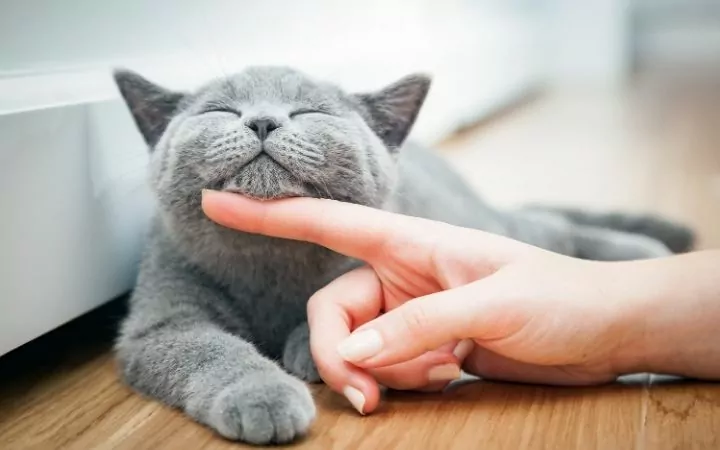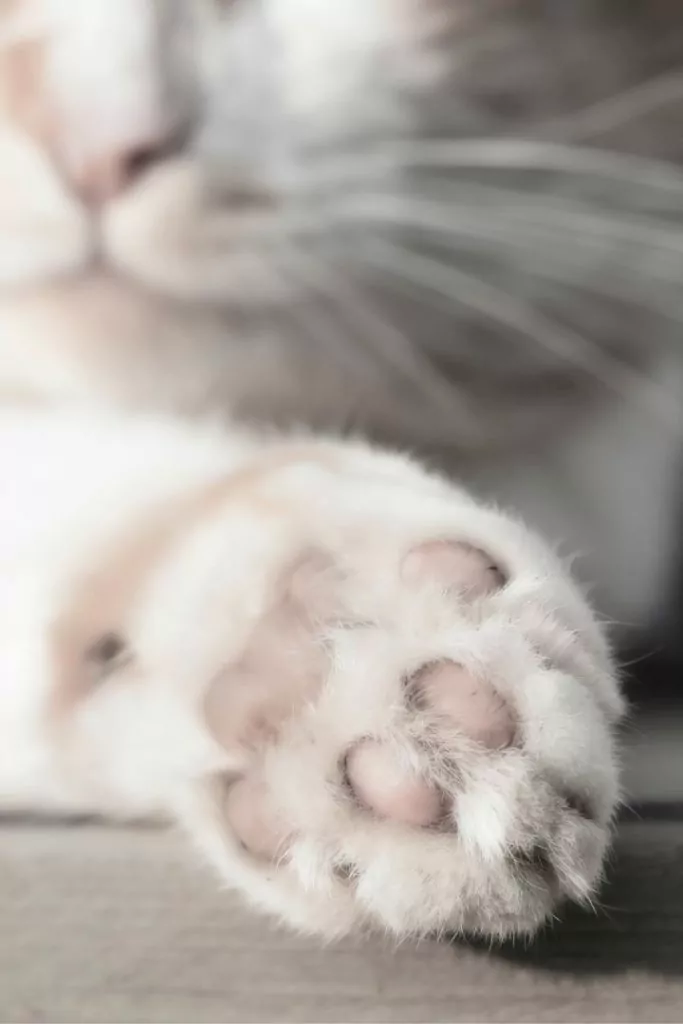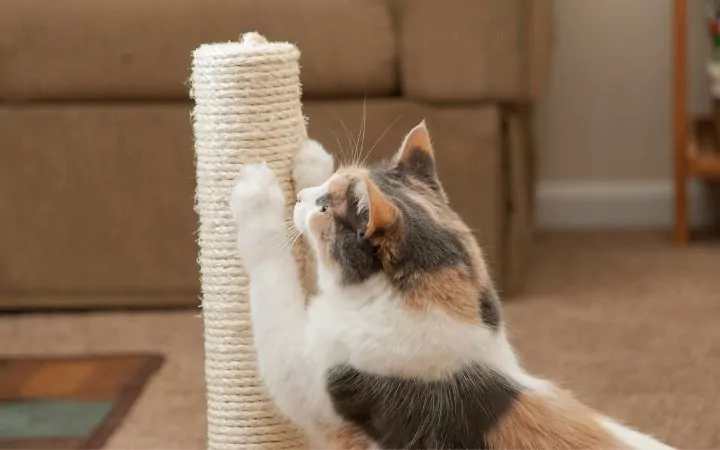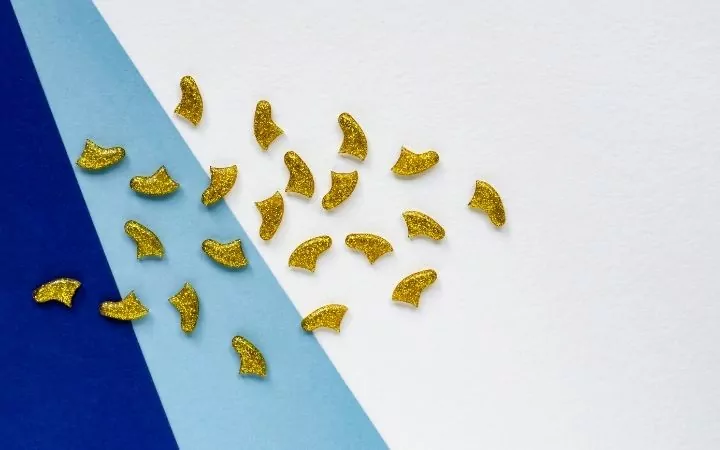What is an Onychectomy?
The onychectomy definition is “removal of the nail.” However, that name does not cover the extent of the procedure, also known as declawing a cat. It’s not just the removal of nail/cat claw, but also the last joint of the toe or finger. It is often done in an attempt to avoid the cat clawing at furniture or their humans.
Onechtomy is considered unethical and illegal in most parts of the world, as declawing a cat is a painful procedure and can cause long-term complications and pain to the cat, feline onychectomy is not recommendable in the vast majority of cases.

Why Would Cat Owners Want to Declaw Their Cat?
Private owners of large cats often arrange for an onychectomy or cat claw removal to make them safer. Owners of small household cats often choose to declaw cats to protect their furniture – and sometimes maybe themselves – from their cat’s sharp claws.
Scratching is a completely natural behavior for cats. Scratching is even considered healthy; it conditions the claw as it removes old cuticles, causes the cat to stretch its muscles, and leaves scent markers that warn other cats to stay away.
Nonetheless, scratching can be very unwanted behavior, damaging your favorite sofa, or maybe you are on the receiving end of the scratching! Onychectomy or declawing your cat is not the solution in the vast majority of cases.
The Onychectomy Procedure Explained
As already mentioned, Onychectomy is far worse than a manicure and a nail trim. The standard onychectomy procedure is done by either a scalpel or guillotine clipper. Sometimes it is done with a laser. No matter the tool, the method concludes with the last part of the toe being cut off. The equivalent would be cutting off the finger at the last knuckle on a human from all ten fingers.
Another option for declawing a cat is a tendonectomy. Here, each tendon that controls the claw is severed. The cat keeps its claws but cannot extend them or use them to scratch. This may seem like a sensible alternative, but this onychectomy procedure comes with its own range of complications. Without the tendons, the toes can curl underneath the cat. That will alter the normal anatomy, causing issues that can become painful over time.
The onychectomy happens under general anesthesia. That means that the cat will feel no pain during the procedure. Still, cats can have sensitive and even painful paws for several weeks after – in some cases permanently due to the alteration of their paw’s anatomy when a cat is declawed.
An onychectomy can be medically necessary as a last resort in some rare cases. For example, when a cat suffers from a severe infection that has reached the bone or cancer has spread through the toe.
However, in most of these cases, it is only necessary to amputate one or two digits, compared to all of them at the same time, meaning it is a lot less invasive procedure.

The Negative Side Effects of Declawing a Cat
As described above, an onychectomy procedure provides a significant change in a cat’s anatomy and can have far-reaching consequences and cause several welfare concerns.
Pain
The onychectomy itself is painful. Although no pain should be felt during the cat’s declawing, due to the general anesthesia, even under the influence of painkillers after the operation, cats tended to show signs of discomfort and pain. Despite cats being typically difficult to pain score, clinical signs after surgery included:
- Guarding posture
- Reluctance to bear weight on declawed limbs
- Lameness
In some cats, declawing may result in permanent lameness, arthritis, and other long-term physical complications. Cats usually walk with their toes bearing their bodies’ weight, and the pad softens their steps under the toe. When declawed, cats experience pain when supporting their body weight, like standing or walking.
Often, to compensate for this pain, cats will attempt to shift their weight back. This change in posture can cause arthritis (inflammation in the joints) that can be painful.
Change in behavior
Scratching is normal feline behavior. Studies suggest that when a cat cannot scratch, it will cause emotional stress. It is difficult to assess whether this is correct, though, as we cannot ask the cats directly. It should also be noted that a lot of cats, between 59 and 78%, continued to display scratching behavior after having been declawed.
Nonetheless, declawed cats tend to display more stress-related behavior, with some even becoming increasingly aggressive and perhaps unclean.
It could also be argued that putting a cat through an onychectomy not only affects the cat; it can also affect its humans negatively as well. A cat in pain needs more regular vet appointments.
Those can be costly and time-consuming, besides the emotional discomfort of seeing one’s pet in pain. Furthermore, it can also lead to increased unwanted behavior that can make the cat more challenging to live with, even if it can no longer scratch the furniture.

Oncychectomy Post-Surgery Complications
Besides having long-term adverse side effects, several more immediate post-surgery complications can happen after an onychectomy. Studies reported a significant increase in adrenal response, suggesting the cats that had undergone an onychectomy were both stressed and in pain.
The reported incidence rate of post-surgery complications ranges from rare to 50%. Some of these include:
Bleeding
The most commonly reported complication after an onychectomy is bleeding. As the cat will continue to move and put pressure on the afflicted area, it is prone to excessive bleeding.
Claw regrowth
In cases where the claw wasn’t completely removed during the onychectomy procedure, a slight regrowth could occur in some cats—resulting in abscess formation and severe pain.
Paralysis
Some cats experience paralysis of nerves after the onychectomy. However, this is often reported to have resolved within 6-8 weeks.
Disease
Pain increases stress, which can reduce immune function and increase the likeliness of a cat catching and developing diseases. Some also suggest that the declawing procedure can worsen chronic illnesses already present.
Infection
As with all surgeries, there is a risk of infection.

Alternatives to Cat Declawing
In the end, an onychectomy is an unnecessary surgery that provides no benefit to the cat from a medical perspective. It is done solely to make the life of the owner more comfortable.
One argument sometimes made about an onychectomy is that the procedure is less unethical than having a cat living out-door (to avoid scratches). In those cases, it should be noted that many cats live happy lives, as most outdoor cars in large parts of the world.
In most northern Europe, it is actually even considered unethical to keep a cat indoors – so it’s more common than you may think!
Nonetheless, if you are the unlucky owner of a cat who tends to throw itself at your favorite furniture and you wish to keep your cat (mostly or entirely) indoors, there are options out there. Try some of the below suggestions to try and keep your cat from turning your cushions into shreds.
- Training: The very best way to avoid your cat scratching your furniture is to train it. Start when your cat is young and encourage it to use a scratching post – rather than your couch. Spray it with pheromone solution or rub it with catnip. Reward with some favorite treats!
- Nail trimming: No, your cat is unlikely to love it, but most can grow to accept it. Trimming your cat’s nails every two to three weeks will significantly reduce damage.
- Nail caps: Little blunt nail caps can be attached to the claws. They need changing every four to six weeks.
Lastly, you can also try to safeguard your furniture as much as possible to avoid destructive behavior. Provide your cat with entertainment in the environment and protect your furniture with plastic, foil, or tape while you’re still teaching it to not scratch.

AVMA’s Policy on Onychectomy Procedures
The American Veterinary Medical Association (AVMA)’s policy is currently that an onychectomy or declawing should only be performed after all other methods to control the scratching have been exhausted.
In the United Kingdom, an onychectomy is only carried out for therapeutic purposes. In the EU, declawing of cats is prohibited in all cases.
Exceptions can be permitted if a veterinarian considers the procedure “necessary for veterinary medical reasons or for the benefit of any particular animal,” for example, in cases with bone cancer.
Summary
an onychectomy should never be considered unless it is for medical reasons. It is a painful procedure and carries no benefits for your furry friend, only risks of pain and discomfort.
It can be endlessly frustrating, but if you have a cat that loves scratching, it is much better to attempt training or nail trimming before amputating the toes.
